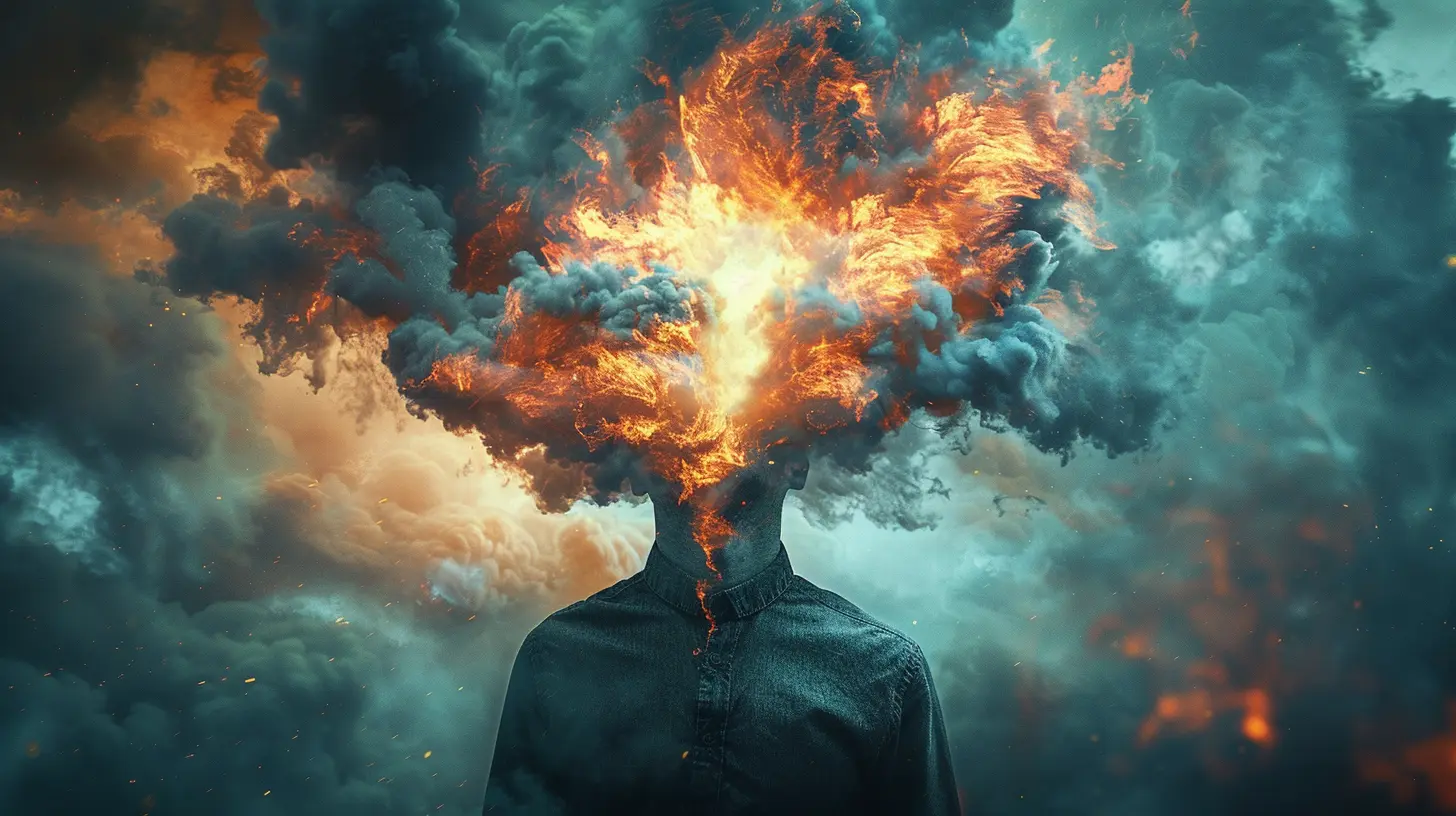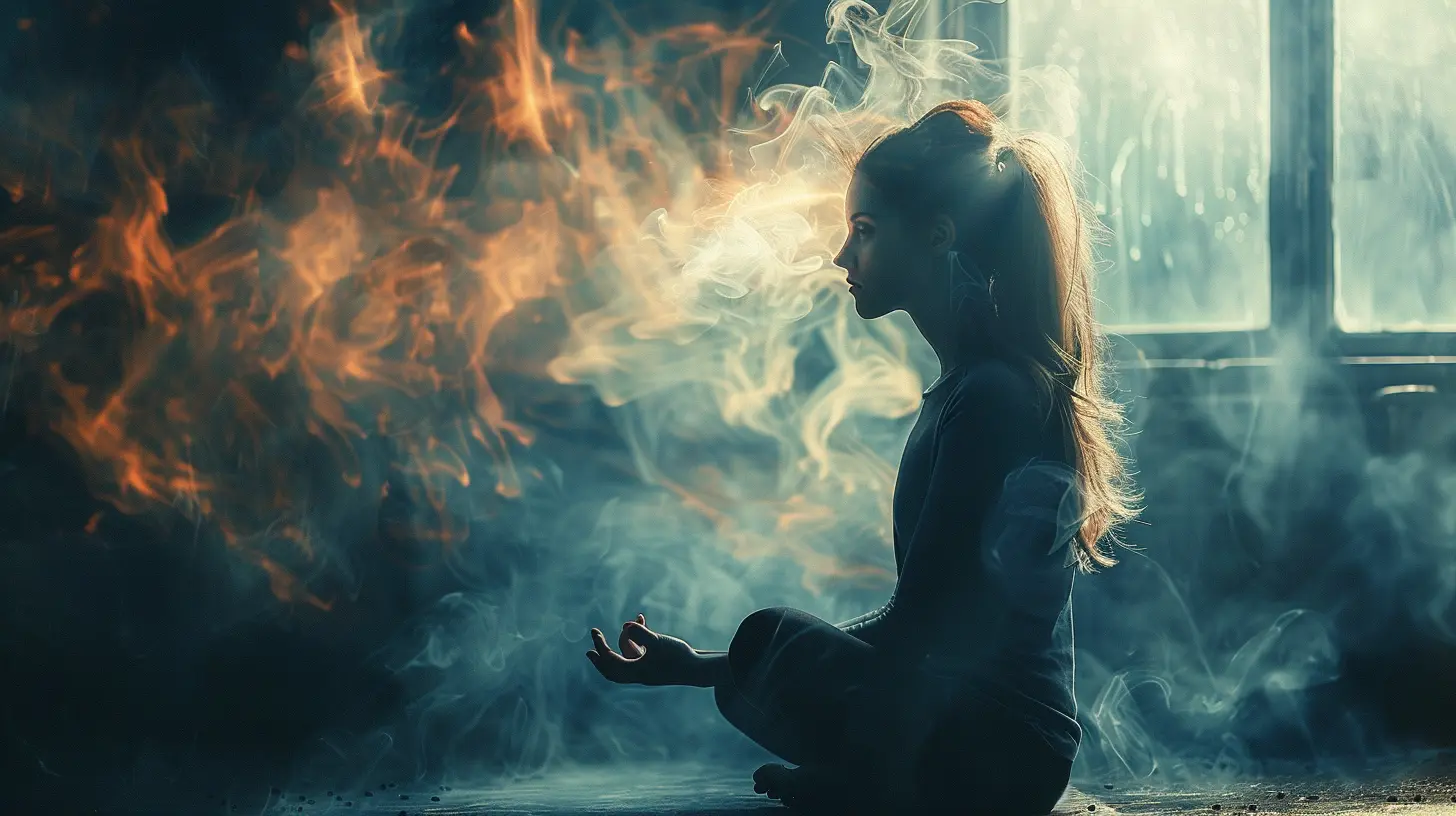Harnessing the Power of Visualization to Strengthen Mental Toughness
18 July 2025
Let’s talk about something that’s not just woo-woo self-help chatter—visualization. You’ve probably heard athletes, high performers, or entrepreneurs throw around phrases like “I visualized my success” or “I saw myself winning before I stepped onto the field.” Sounds kind of mystical, right?
Well, there’s actually some serious psychological juice behind this idea, and it’s all about training your brain the same way you'd train your muscles. So pull up a chair, because we’re diving deep into how you can start harnessing the power of visualization to strengthen your mental toughness.
What Is Visualization, Really?
Visualization is essentially mental imagery. It’s the act of creating pictures in your mind—consciously and deliberately. But here’s the kicker: your brain doesn’t fully differentiate between real and imagined experiences. Crazy, huh?When you vividly imagine performing an action, your brain lights up as if you’re actually doing it. That’s why elite athletes use visualization as a mental rehearsal tool. But this isn’t reserved for people chasing Olympic gold. You can use visualization to build confidence, crush anxiety, and develop stoic-level mental grit.
Mental Toughness: The Grit That Gets You Through
Before we go full throttle into visualization techniques, let’s zoom in on what mental toughness actually means.Mental toughness isn’t just about “powering through” like some overly caffeinated motivational quote. It’s about resilience, emotional control, and the ability to stay locked in—especially when everything around you screams for panic.
Picture this: Imagine you're climbing a mountain. There’s wind, your legs are burning, the summit feels miles away. Mental toughness? That’s the inner voice saying, “Keep climbing.” It’s grit. It’s grace under pressure.
And guess what? Visualization helps you rehearse that climb—emotionally, mentally, even physically.
The Science Behind Visualization and Mental Toughness
Let’s geek out for a second. When you visualize successfully completing a task, your brain activates the same neural networks it would if you were actually doing it. That’s how powerful it is.🧠 Neuroscience 101: Visualization activates areas like the motor cortex, prefrontal cortex, and even your limbic system (which handles emotions and motivation). So whether you're imagining nailing a job interview or staying calm during a crisis, your brain is practicing in real-time.
In other words, visualization is like a mental dress rehearsal. You're preparing your mind and body to perform under pressure.
Why Visualization Works (Even If You're Skeptical)
Still not convinced? Let’s break it down with some super relatable examples:- Ever felt nervous before a big presentation, but felt calmer after walking through it in your head a few times?
- Or maybe you imagined yourself having a difficult conversation—and when it happened, you stayed cool instead of flipping the table?
That’s visualization, baby. You practiced your response, stayed one step ahead, and ended up more composed in the real moment.
Visualization and the Brain-Body Connection
Here’s the weird but awesome part: your body responds to mental images. Think about a lemon. Picture slicing it, the juice squirting out, the sour smell hitting your nose, and the taste... Are you salivating yet?Exactly.
Now, imagine visualizing courage, calmness, or strength. Your body will begin to respond by aligning with those thoughts—slower heart rate, steady breathing, tensed muscles ready to act.
The mind-body connection? It’s not fluff; it’s biology.
Mental Toughness Isn't Built Overnight
Alright, real talk—mental toughness is more like building a wall brick by brick than flipping a light switch. Visualization is one of those bricks, but it needs to be practiced.Think of it like going to the gym. You don’t get abs from one set of crunches, right? Similarly, one mental warm-up session won’t make you unshakable under pressure. It’s daily reps. Mental reps.
Just 5–10 minutes a day can create significant shifts over time. That's less time than scrolling Instagram or standing in line for coffee.
Types of Visualization Techniques
Let’s get into the nitty-gritty. Not all visualization is created equal. There are a few different ways to practice it, and depending on your goals, one might suit you better than others.1. Outcome Visualization
This one’s a fan favorite. You imagine the end result you want—whether it’s acing an exam, finishing a marathon, or staying calm during a tough convo. You see yourself succeeding. Smiling. Winning.This boosts your motivation and helps you mentally “own” the win before you get there.
2. Process Visualization
This one digs a bit deeper. Instead of visualizing the outcome, you walk through the steps to get there. For example, imagine studying diligently, feeling focused, applying knowledge during the test.This is clutch because it prepares your brain for the how, not just the what. It also reduces performance anxiety, since you’re mentally rehearsing the journey.
3. Stress-Scenario Visualization
Here’s where the real magic happens.Ever heard the phrase: “Train hard, fight easy”? This technique is your mental bootcamp. You intentionally visualize high-stress situations—and see yourself handling them like a rockstar. Cool, calm, collected.
You feel the fear. You see the chaos. But you also see yourself breathing through it, thinking clearly, solving problems.
This builds psychological armor. When crap hits the fan, you’ve already fought this battle—in your mind.
How to Practice Visualization (Step-by-Step)
Let’s not overcomplicate it. Here’s a quick-start guide to building your own visualization practice:Step 1: Find Your Quiet Zone
No distractions. No notifications. Just you and your mind. Sit or lie down, close your eyes.Step 2: Breathe First
Deep, slow breaths. In through your nose, out through your mouth. This signals your brain that it’s time to focus.Step 3: Engage Every Sense
Don’t just see it—feel it. Imagine sights, sounds, smells, even how your body feels. The more senses you involve, the more real it becomes.Step 4: Picture the Scenario
Whether it’s crushing a goal, staying calm in chaos, or overcoming a fear—mentally walk through it. Watch yourself go through the motions.Step 5: Reflect and Repeat
After a session, reflect. Did you feel empowered? Did anything throw you off? With practice, your brain will start rewiring itself for confidence and resilience.Visualization Mistakes to Avoid
Nobody likes rookie errors. Here are a few pitfalls to sidestep:- Being too vague: “I want to succeed” is too fuzzy. Get specific. What does success look like?
- Skipping the emotions: A flat, emotionless visualization won’t stick. Feel the pride, the struggle, the grit.
- Only visualizing successes: Train for the hard stuff too. Include obstacles. Visualize yourself overcoming them.
- Inconsistency: Like any skill, mental toughness through visualization takes consistency. One-and-done won’t cut it.
Real-Life Stories: From Visualization to Mental Victory
Let’s get out of the psychology textbook and into some real tales.- Michael Phelps, Olympic swimmer, visualized every race detail—down to the water temperature and crowd noise. When his goggles failed mid-race? He’d already visualized it. He still won gold.
- Jim Carrey wrote himself a $10 million check for “acting services rendered” and visualized success before he was ever famous. Years later, he landed Dumb and Dumber—with a $10 million paycheck.
- Everyday folks—students, parents, entrepreneurs—use visualization to prepare for nerve-wracking talks, marathon runs, or even just to get out of bed on tough mornings.
You don’t need to be a celebrity to use this superpower. It’s human. And it’s yours.
Visualization + Action = Real Growth
Let’s be real—visualization isn’t magic. You can’t sit around imagining success while Netflix auto-plays another episode. Action is the secret sauce.Visualization primes your mind. Action seals the deal. When you combine them? That’s when transformation happens.
Think of it like mapping a route and driving the car. You can’t reach your destination with only one.
Quick Visualization Prompts to Build Mental Grit
Need a jumpstart? Try these:- “Picture yourself staying calm during a tough conversation at work.”
- “Visualize pushing through mile 23 of a marathon with your legs screaming but your willpower stronger.”
- “Imagine failing at something—and choosing to grow from it instead of giving up.”
Use these prompts daily. Watch your brain grow into a mental fortress.
Final Thoughts: See It Before You Become It
Visualization isn’t some mystical Jedi trick—it’s a trainable, science-backed tool that strengthens one of the most underrated muscles we have: mental toughness.Even if you’re skeptical, give it a try. Your brain is more powerful than you think. And when you start seeing the version of you who stays calm under pressure, performs like a pro, or pushes through fear?
Eventually... you become that person.
So close your eyes, take a breath, and visualize who you want to become.
Step into it.
all images in this post were generated using AI tools
Category:
Mental ToughnessAuthor:

Janet Conrad
Discussion
rate this article
1 comments
Georgina Erickson
Visualization effectively enhances mental toughness by shaping resilience and fostering a positive mindset in challenging situations.
August 6, 2025 at 3:46 PM

Janet Conrad
Thank you! I'm glad you found the connection between visualization and mental toughness compelling. It truly plays a vital role in building resilience and a positive outlook.


